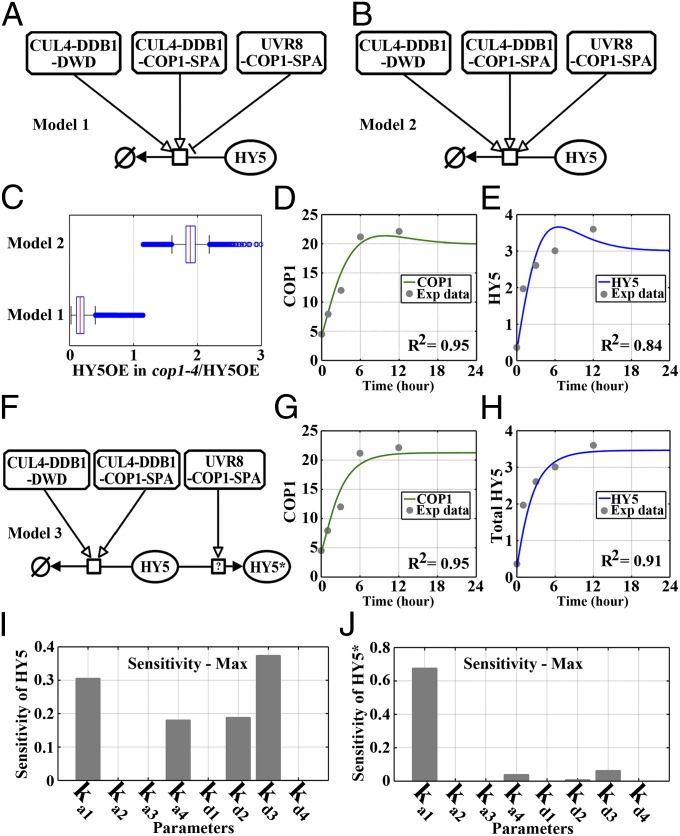Fig. 5.
The regulation of HY5 by photomorphogenic UV-B signaling. (A and B) Models 1 and 2 showing two possibilities for the regulation of HY5 by the UVR8–COP1-SPA complex. (C) Simulations of the accumulation of overexpressed HY5 (HY5OE) proteins in wild-type and cop1-4 seedlings based on the models shown in A and B. (D and E) Simulations of COP1 (D) and HY5 (E) protein accumulation in wild-type seedlings during the transition from –UV-B to +UV-B based on model 1. Exp, experiment. (F) Model 3 showing the possibility of a stabilized form of HY5, HY5*, promoted by the UVR8–COP1-SPA complex. (G and H) Simulations of COP1 (G) and HY5 (H) protein accumulation in wild-type seedlings during the transition from –UV-B to +UV-B based on model 3. (I and J) Parameter sensitivity of the dynamic constants with respect to the concentrations of HY5 (I) and HY5* (J). The parameters indicate the association/dissociation rate of the UVR8–COP1-SPA complex (with the rate constant ka1/kd1), the CUL4-DDB1–COP1-SPA complex (with the rate constant ka2/kd2), the UVR8–RUP1/RUP2 complex (with the rate constant ka3/kd3), and the CUL4-DDB1–DWD complex (with the rate constant ka4/kd4).

